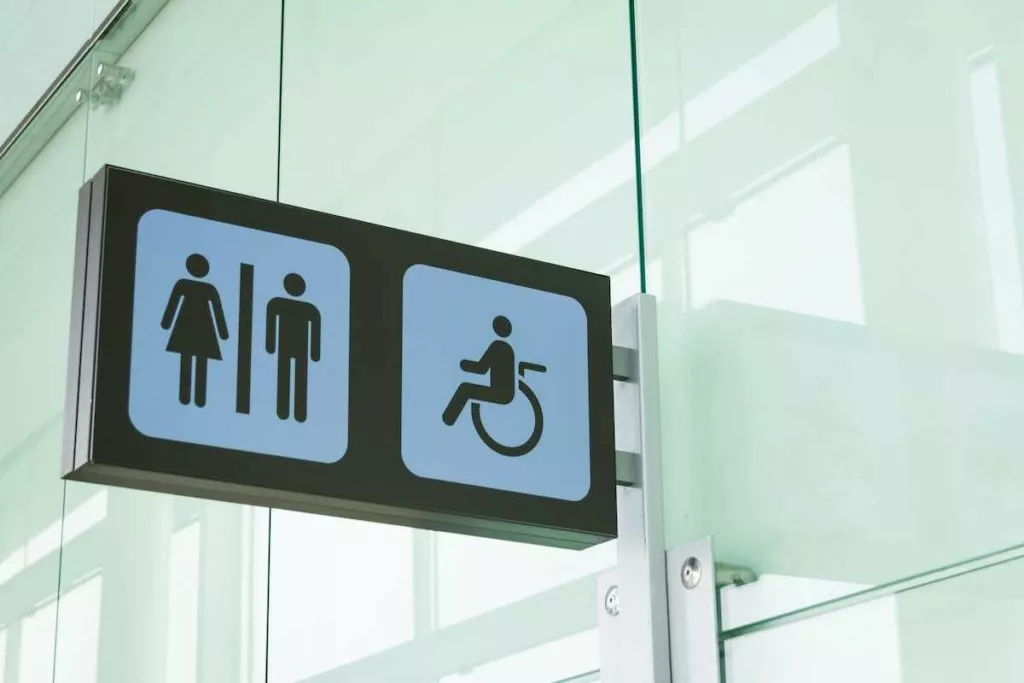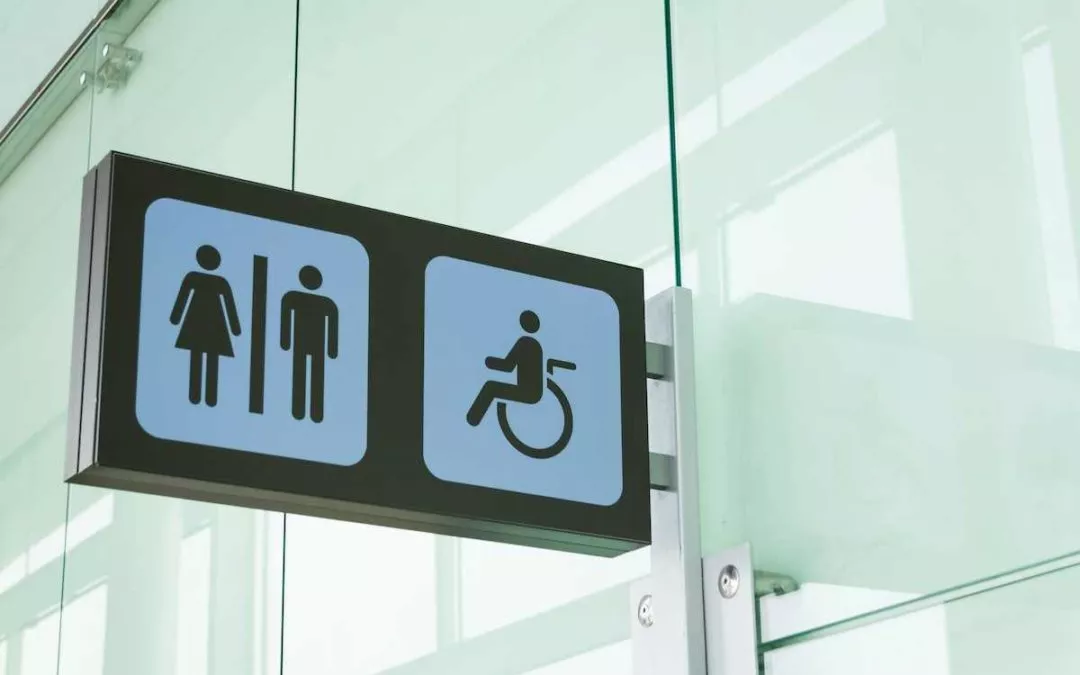
For people living with disability or mobility issues, it is often the little things that turn into a challenge. Simple day-to-day tasks like getting out of the bath or even a trip to the toilet can quickly become complicated, especially if you don’t have access to the right piece of equipment or to adapted facilities.
Homes, buildings or even cities are often designed without taking special needs into consideration, resulting in many people feeling excluded.
Get a FREE Brochure
Simply complete our form to see a full range of bathing solutions & their key features. It takes no time at all!
At Bathing Solutions, we’ve decided to find out exactly how accessible our cities’ loos really are. For that, we started by looking at the data surrounding accessible public toilets.
Here’s what we found…
Accessible toilets in numbers
- One third of the UK’s 13,552 public loos are accessible-friendly
- Edinburgh is the UK’s most accessible city – 67% of the public loos here are wheelchair accessible
- In comparison, just 35% of the loos in London are wheelchair friendly
- With 58% of its public loos accessible, Northern Ireland is the most accessible country in the UK
The 2020 Loo Accessibility Index
Click headers to sort:
| Ranking | City | Public loos (total) | Accessible loos (total) | % Accessible |
|---|---|---|---|---|
| 1 | Edinburgh | 117 | 78 | 66.7% |
| 2 | Coventry | 43 | 27 | 62.8% |
| 3 | Belfast | 51 | 32 | 62.7% |
| 4 | Southend-on-Sea | 54 | 29 | 53.7% |
| 5 | Bristol | 93 | 48 | 51.6% |
| 6 | Manchester | 59 | 29 | 49.2% |
| 7 | Sheffield | 75 | 35 | 46.7% |
| 8 | Leeds | 72 | 29 | 40.3% |
| 9 | Swansea | 35 | 14 | 40.0% |
| 10 | Preston | 20 | 8 | 40.0% |
| 11 | Newport | 18 | 7 | 38.9% |
| 12 | Reading | 23 | 8 | 34.8% |
| 13 | London | 1479 | 514 | 34.8% |
| 14 | Oxford | 42 | 13 | 31.0% |
| 15 | Canterbury | 54 | 16 | 29.6% |
| 16 | Bradford | 36 | 10 | 27.8% |
| 17 | Cardiff | 24 | 6 | 25.0% |
| 18 | Liverpool | 60 | 14 | 23.3% |
| 19 | Glasgow | 43 | 10 | 23.3% |
| 20 | Birmingham | 91 | 20 | 22.0% |
| 21 | Nottingham | 43 | 9 | 20.9% |
| 22 | Southampton | 31 | 6 | 19.4% |
| 23 | Leicester | 45 | 8 | 17.8% |
| 24 | Stoke-on-Trent | 25 | 4 | 16.0% |
| 25 | Cambridge | 39 | 6 | 15.4% |
| 26 | York | 26 | 4 | 15.4% |
| 27 | Sunderland | 24 | 3 | 12.5% |
| 28 | Aberdeen | 22 | 1 | 04.5% |
Why we need more (and better) accessible toilets
Now, are accessible public loos really adapted to people with special needs?
As it turns out, standard accessible toilets aren’t just “accessible” for everybody. People with severe and multiple learning disabilities, as well as those with a range of other disabilities such as muscular dystrophy and muscle-wasting conditions, multiple sclerosis, motor neurone disease, stroke or even older people need more well-adapted facilities. This includes both extra equipment and extra space to enable them to use toilet facilities safely and comfortably.
Shona Cobb, the 23-year-old blogger behind Shona Louise, explains that she often struggles using standard accessible toilets: “As an electric wheelchair user, I often find that some accessible toilets simply aren’t big enough for my wheelchair, whilst still allowing an appropriate amount of space to transfer. Sometimes there are also bins in the way next to the toilet itself making transferring challenging.”
“Cleanliness is also a big problem and one that comes up more for toilets that don’t use a RADAR key (i.e. a special pass to open accessible toilets).”
For her like for the 11 million people living with disability in the UK, accessible toilets can mean the difference between a day out and being stranded at home.
“I check the availability of accessible public toilets wherever I go, it’s as integral a part of my planning as is my journey there and the access of where I’m travelling to. It’s a part of accessibility that people often forget about, most people can just head out their house assuming that at some point they’ll be able to access a public toilet, but I just can’t take that chance.”
“These spaces are absolutely vital for me. Without access to an appropriate bathroom, I leave myself having to restrict my liquids, a situation I find myself in more regularly than people think”.
The consequences on mental health
Not having access to a usable bathroom space can have serious consequences on the lives of those who need them.
The Changing Places Consortium is a group of organisations that has been campaigning for fully-accessible public toilets for more than a decade.
Changing Places toilets are more spacious than standard accessible toilets. They include equipment such as height-adjustable changing benches, a tracking hoist system, screens and curtains for privacy and wide tear-off paper rolls.
The Consortium is regularly contacted by people who struggle with the lack of facilities. Karen Hoe, Development Officer at Muscular Dystrophy UK says: “Having access to one of the 1,527 Changing Places toilets across the country can make a world of difference for people with conditions like muscular dystrophy, ensuring greater independence and making planning days out much easier”.
“Without access to these toilets, people with severe disabilities are faced with the stark choice of not going out, cutting their outings short, or being changed on a dirty, unhygienic toilet floor. We urge both councils and businesses to install more Changing Places facilities, which would help tackle the exclusion many disabled people face.”
For Shona, this feeling of being excluded has increased during lockdown as more public toilets are closed. “It’s almost like people assume that disabled people are not going to be out and about and therefore we don’t require access to the toilet. Even when the standard toilets are open, I’ve seen accessible ones being shut and locked, and things like that definitely have an impact on my ability to go out and live the life I want.”
“Travelling into London for work has become more anxiety-inducing because I am aware that a lot of accessible public toilets have been closed ‘for safety reasons’ – but to me, it’s just creating another barrier.”
Lack of loo data
When asked about the count of accessible public toilets, Raymond Martin, Managing Director at the British Toilet Association, says that the problem isn’t limited to the accessible ones.
In fact, the public toilet provision has been steadily declining across the country in recent years. In 2018, the BBC reported that UK councils stopped maintaining around 13% of public toilets over the last 8 years.
Martin says this is mainly due to austerity measures and budget cuts. Public toilets are managed by the councils and few have the capacity to maintain or adapt these infrastructures. What’s more, the lack of a centralised sanitation department makes it difficult to keep up-to-date records about where the loos are and if there are still in use.
Initiatives like The Great British Toilet Map (used in this research) are useful mapping tools to capture the big picture. But as they partly rely on public participation, it makes it difficult to verify and update the data.
Martin says ensuring there are enough up-to-spec public toilets – including accessible ones – is as much a public health issue than it is economic. “Installing more accessible public toilets contribute to make our society more inclusive and, ultimately, contribute to the economy as people with mobility issues represent a large share of the UK population.”
Changing Places hopes both councils and businesses step up to install more Changing Places facilities to tackle the exclusion of disabled people.
Current building regulations only require standard accessible toilets to be provided. However, with the inclusion of Changing Places in the British Standard 8300 (the guide that sets how building are designed) and the government debating their provision in 2019, they should hopefully soon become the norm in new buildings.
But there is still a long way to go to roll out these facilities across the country.
Do you have a story to share about mobility or improving public access? Contact us now
How we produce the Loo Accessibility Index:
Open data from the UK’s largest database of publicly-accessible toilet (The Great British Public Toilet Map) was used to identify the total number of loos as well as accessible loos. This data includes public toilets, but also toilets in stations and other transport networks, shopping centres, public buildings, and other businesses that agree to have people use their bathrooms for free. Only 28 cities were included for the purpose of this research. Data was gathered on the 20th October 2020.






